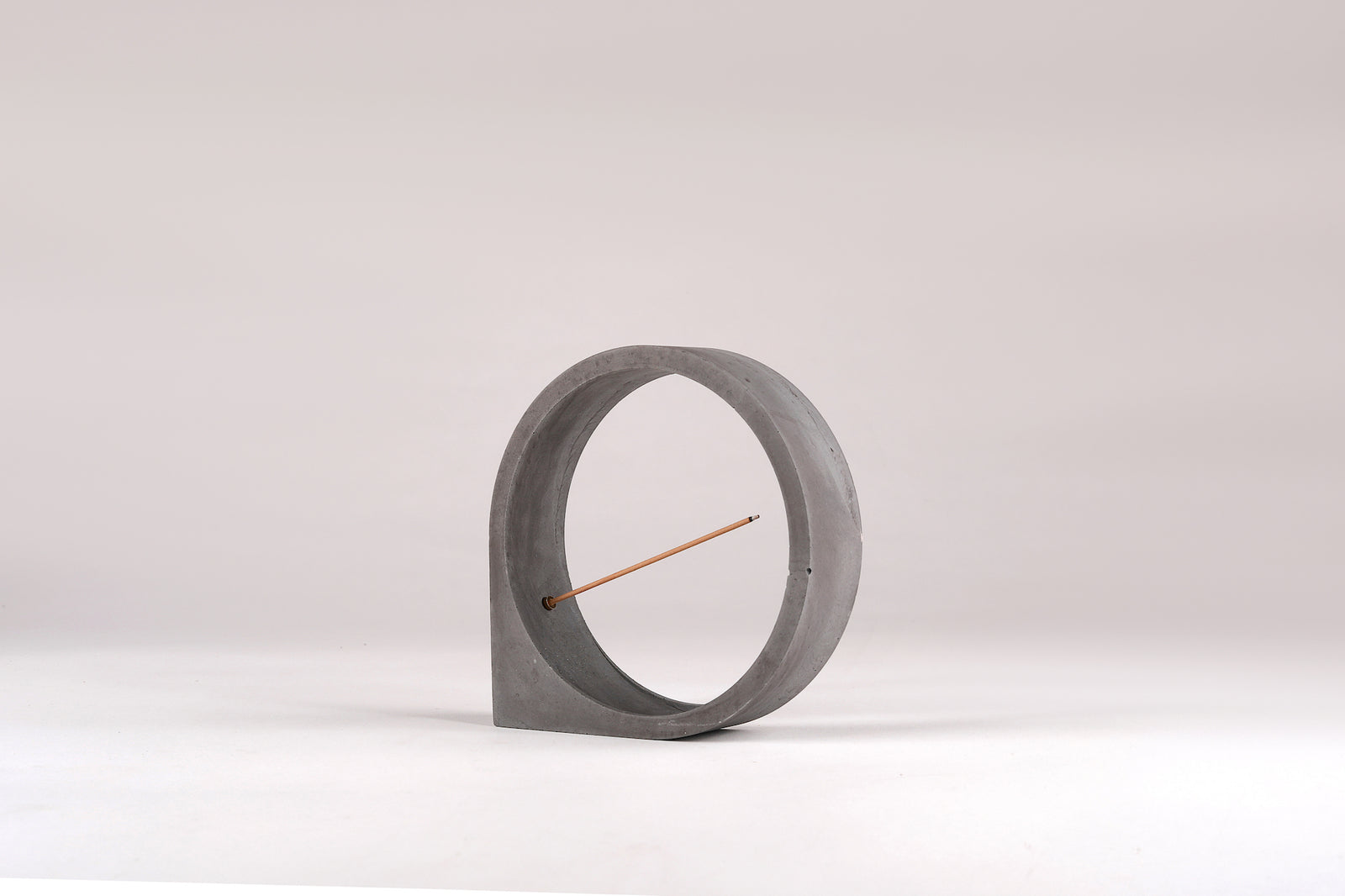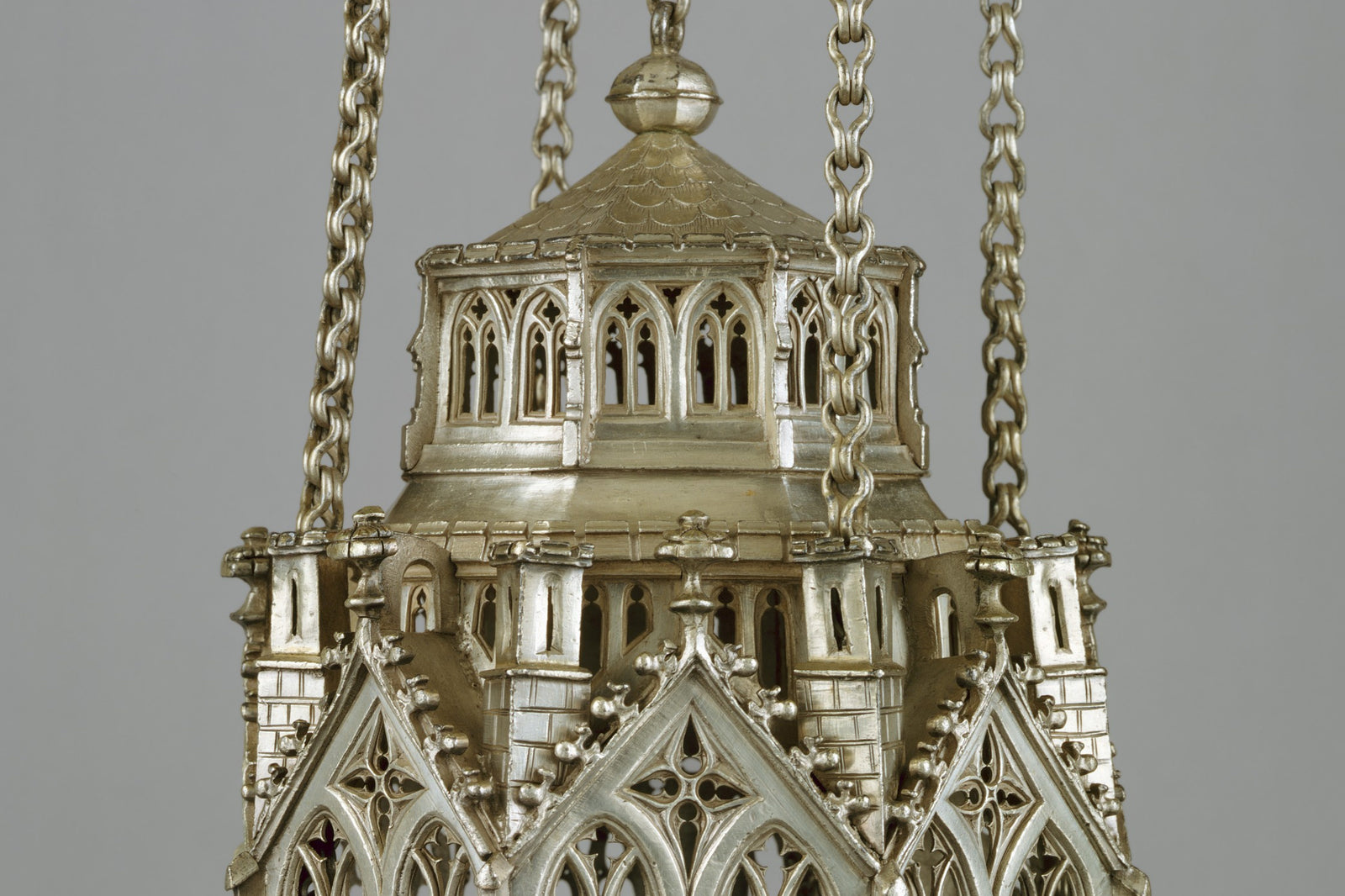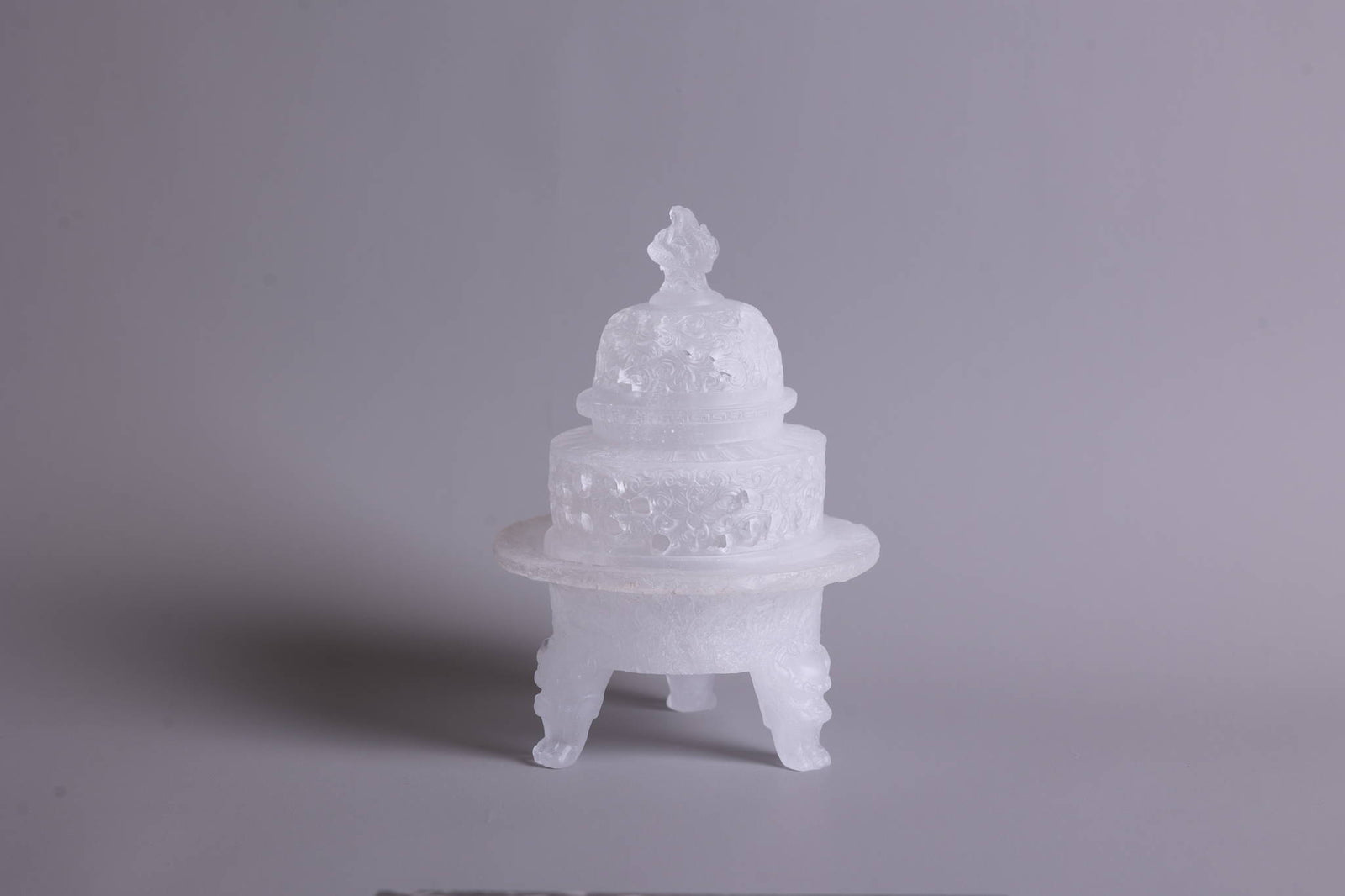Is burning incense bad for you? This is one of the most common questions surrounding incense, particularly for those just entering their incense journey, and it would be remiss of us not to address this important issue.
We have spent quite a lot of time reading the research conducted on this topic, and based on those, our own conclusion is that high quality natural incense, when used in moderation and with common sense, poses minimal health risks. We found a succinct and helpful summary posted on the Australian Government Cancer Council website about this precise question, so if you’re looking for a quick answer, we highly recommend it. To paraphrase, it is true that the burning of incense – like any organic matter - releases chemicals. But to date, no large scale studies have conclusively shown that moderate incense use at home releases the level of chemicals required to significantly affect a person’s risk of cancer. That is not to say we shouldn’t all take some common sense precautions when burning incense such as regularly ventilating the area where incense is burnt, and ensuring we do not sit too close to the incense smoke.
Before going into more details, we’d also like to point out that when you make a decision about burning incense, you should weigh the potential risks against potential benefits. As we discuss extensively in a separate article, incense has a number of benefits, Many incense ingredients – sandalwood being one of the most common – are scientifically proven to help with relaxation, mood, and various ailments, they also often repel insects, and provide a pleasant aroma for the home. If you’re considering alternatives for these purposes (eg, air freshener sprays, diffuser sticks, candles, various insect repellant products), please also investigate their ingredients and potential harmful effects.
We ourselves use natural, high quality incense on a regular basis, and that is a practice we promote. In this article, we’ll go into the details of how we arrived at this conclusion.
The basics #1: What is incense made from?

As we’ve written in other articles, there are two basic elements to incense: aromatic substances, and a heat source. The heat is what releases the scent.
The aromatic substances have traditionally been a range of organic materials: woods, resins, seeds, roots, leaves, flowers, and sometimes a small amount of animal matter, like ambergris or unguis odoratus. Some common ingredients are below, and different combinations yields different scents:
- Woods: sandalwood, aloeswood (agarwood), cedar
- Barks, roots and herbs: cinnamon, spikenard, clove, ginger
- Flowers: lavender, rose, jasmine, frangipani
- Resins: frankincense, myrrh, benzoin, camphor
In East Asia, powders made from ingredients like those above is typically bound together by a wood-based natural binder called Nanmu powder in Chinese, Makko or Kabu No Ki in Japanese. The adhesive powder or binder, along with water, allow the powders of the raw materials to be formed into stick, cone, coil or other shapes. In India and south Asia, a resin-based binder called halmaddi is commonly used. This type of incense also has a bamboo stick as the center. Additionally, these days it is also common to find essential oils added to incense.
Unfortunately many incense today are not made from all natural ingredients. Those types of incense contain artificial fragrance and other chemicals, likely made form petro-chemicals. Don’t be fooled by the scent of the incense or the price, there are some expensive and seemingly great smelling incense which contain these synthetic fragrances.
The basics #2: Different ways of burning incense
When incense was first used by humans, raw ingredients were simply lit up and burnt. It was discovered that heat released the fragrant essential oils into the air, creating a pleasant smell. This method has evolved over time, and these days two primary forms of incense burning are practiced.
The most common way of burning incense is to light up pre-made incense sticks, cones or coils. This is with the exception of the Middle East, where the practice of burning incense over charcoal is widely practiced. This involves putting small pieces of what is called oudh or bakhoor (aloeswood or agarwood chips with additives) over a burning charcoal.
Are there air pollutants released when incense is burnt?

When any organic matter is burnt, it emits smoke and chemicals are released. This is no different when incense is burnt. The specific composition of the smoke varies depending on the type of incense, but they typically fall into the main categories below. At excessive levels, they are considered indoor air pollutants and are health hazards:
-
Carbon monoxide, Sulfur dioxide, Nitrogen Dioxide - most commonly released into the air from the burning of fossil fuels, although small quantities can naturally occur from events like volcanos, forest fires and lightening. High levels of carbon monoxide can cause dizziness and weakness; high levels of sulfur dioxide and nitrogen dioxide can cause respiratory system dysfunction, lung illnesses as well as heart complications
-
Polycyclic aromatic hydrocarbons (PAHs) – released due to the incomplete combustion of organic materials. These are widespread in the environment and can be found in air, water, soil. In small quantities these generally have a low degree of acute toxicity to humans, but long term exposure is linked to higher cancer risk
-
Volatile organic compounds (VOCs) – chemicals that have low boiling points and therefore evaporate easily at room temperature. These are most commonly released by the burning of fossil fuels, and are released into the air by vehicles and industrial processes. They can cause eye, nose, throat irritation, headaches, nausea/vomiting, dizziness and exacerbate asthma. Long term exposure leads to various forms of cancer
-
Particulate matter (PM) – fine particles lower than 10μm (and specifically lower than 2.5μm) are known to cause lung and respiratory illnesses above certain concentrations. The burning of incense, wood and candles all release particulate matter
Diethyl phthalate (DEP), which is a type of synthetic plasticizer and detergent base, is commonly used in Indian incense, and also released into the air if this type of incense is burnt. This is not commonly found in the Chinese/Japanese style of incense.
Additionally, the charcoal used in the burning of oudh or bakhoor incense increased the release of these chemicals during burning. A greater amount of charcoal caused larger and longer emissions.
So…Is burning incense bad for you? Is incense linked to cancer?
There is no doubt that the chemicals contained by incense smoke, if inhaled at large quantities and chronically, are bad for you. This is undisputable, and the links are published in many studies. However, the question remains whether moderate personal use produces these chemicals at high enough quantities to cause health risks. PAHs, VOCs and PM exists in the air from many natural and industrial sources, and most of us live with daily exposure to them in the form of car exhaust, dust from construction, factory emissions, natural fires, etc... Most governments regulate the level of these emissions, and set a level below which they are considered tolerable for general human health.
Studies that show a link between incense use and health problems
The most comprehensive article we found regarding the potential health and environmental risks of incense is this one (Yadav et al, 2022), it provides a well structured summary of many previous studies. The summary is quite thorough, although drawing a conclusion from it is not straightforward.
First, the article places significant emphasis on studies focused on temples, and the impact of burning incense on the air within and around them. Several examples of these studies include this one measuring the difference between indoor and outdoor air quality at a Taiwanese temple (Lin et al, 2008); this study of temple workers in Taiwan (Ho et al, 2007), where they were found to have higher chances of respiratory system dysfunction such as chronic cough, nasal and throat allergies; and this study in Hong Kong which established an association between temples and respiratory mortality(Cai and Wong, 2021).
While we agree that the data presented is extremely alarming for temples, their long term workers and nearby residents, these types of data are not relevant for most household incense users like us because the level of exposure is vastly different.
Besides these, the article lists a number of other studies which establish a link between incense smoke and various health conditions: respiratory issues, cardiovascular issues, neurological issues, cancers of various forms. We need to note here that most of these studies are either based on animals, have a small sample sizes, or were studies that grouped incense together with other items like insect repelling coils. This is not to say the results are not informative, they are, but we need to be careful about drawing conclusions for the entire population based on these. (To get an idea of some of these studies, this is a relatively robust and recent study on the impact of incense smoke on mice (Yamamoto, 2021), examples of studies with small samples: this one is on the impact on incense on patients with pulmonary diseases (Guo et all, 2020), and this one is on the effects of inhaling Oud incense on the voice of Saudi adults (Mesallam, 2015)).
There are several larger scale studies which we should mention. This one (Friborg, 2008) analyzed results from over 60,000 Singaporeans (the data collected was not specifically for the purpose of studying health effects of incense, but for a wide range of health studies). It concluded that there is an increased risk of respiratory cancer for incense users. Our reading of the results is that some linkage can be seen in the data, but the link does not seem statistically strong. Another study (Geng et al, 2019)analyzes the same data for end-stage renal disease (ESRD). It concluded that users who did not use incense daily or daily users for 20 years or less did not have increased risk of end-stage renal diseases. Daily users that had used incense for more than 20 years had 25% higher risk of developing these diseases. For reference, the occurrence of ESRD in the general population is around 0.02%.
Studies that show no link between incense use and health problems
A number of studies which show the opposite conclusion – that incense burning have no association with diseases such as cancer and brain tumors – were not mentioned in this particular article. We will mention them here for balance, and you can find a summary of them in this article on the impact of incense smoke on airways disease (Lin et al, 2008). Of course many of these studies suffer from the same issue of small sample sizes.
For example, this study in Hong Kong (Koo et al, 2016) found no association between exposure to incense and respiratory symptoms like cough, bronchitis, wheezing, asthma or pneumonia. And another study in Hong Kong (Chan-Yeung, 2003) confirmed smoking as the most important risk factor associated with lung cancer, while exposure to incense smoke and frying pan fumes were not significant risk factors.
How should we interpret the study results?
All in all, we do not believe there is conclusive evidence that moderate household incense burning is detrimental to health. But I think it is reasonable to conclude that burning incense does release chemicals with potentially harmful effects. And there is a body of evidence which show these are hazardous where exposure is high and pro-longed. We would not recommend using incense in this way.
But we would encourage you to read the studies yourself and draw your own conclusions. That is always the best way.
Synthetic vs Natural incense – how do they compare?
What we have not yet discussed so far is the types of incense covered by these studies. And the fact of the matter is, the researchers themselves also either did not know the types of incense used, or did not control for the ingredients of the incense. Quite a number of the studies pointed to the wide variety of incense products on the market as a limitation of their study.
What we suspect, and what the reality is likely to be, is that most of the incense involved in these studies are low quality products, where the typical composition consists of subpar wood powder along with substantial artificial enhancements. This is unfortunately what is commonly sold on the market today, and especially true of the incense sold and burnt in temples. In fact, our own incense teacher – a highly respected incense teacher who has spent decades studying the art – has taught the heads of many temples and monasteries in China. He has often told us that one of his driving forces in working with this community is the abundance of poor quality incense burnt in temples and monasteries today. He considers this a significant health hazard, and hearing of monks who have fallen ill due to this has touched him deeply.
This is very much in line with the stated purposes of many studies we read. The authors are not advocating for a stop to incense use. They acknowledge the important religious and spiritual aspects of incense, and how deeply rooted incense use is in human culture. What they advocate for is more oversight and awareness of the ingredients used, and further investigations into the exact effect of incense on the human body. This is something we wholeheartedly support.
So in short, there is currently no study which systematically compares the health effects of artificially enhanced incense with all natural incense. But we strongly suspect that artificial enhancements and their negative health effects is a driving force for many of the studies conducted, and for the attention on this area in recent years.
What we should advocate for: not stopping the use of incense, but minimizing the downsides
Better information would allow us to use incense in a way that potential downsides are mitigated, and maximum benefits are reaped. After all, this is the way societies manage the use of many things we consider important– cars, buildings, packaging… to name a few. The solution is not to stop using these things, it is to find better ways of using them. For example, we created cars that can combust more efficiently and so release less chemicals, and are now moving onto electric vehicles to further reduce fumes. What types of incense has the least potential to cause harm? How do we make these types of incense? These are the questions that are well worth investigating.
Is incense smoke worse than cigarette smoke?

We do not believe that incense smoke is worse than cigarette smoke. Of course this is dependent on the exact ingredients of the specific incense and cigarette, but we believe that generally speaking, tobacco smoke poses much greater health risks than incense smoke.
Two studies conducted in Japan showed that cigarette smoke significantly decreased male testicular function and fertility, and comparable incense exposure had no effect. In fact, the results were quite significant, as one study (Yamamoto et al, 1997) showed that after exposure to 1hr of cigarettes for 10 weeks, male mice had approx. 33% lower sperm count, and each remaining fertile male mouse produced almost 50% less number of litters.
Granted, these are animal studies and with small samples, and there is a conflicting report which shows burning incense has greater toxicity than cigarettes (Zhou et al, 2004). However, many sources have cast doubt on this report as the lead researcher works for a tobacco company. We will leave it up to you to decide how you interpret this study.
It is true that incense generates some of the same chemicals and particulate matter as tobacco smoke, but we need to keep in mind that similar chemicals are generated by many burning substances. Moreover, cigarette smoke is inhaled directly into the lungs, whereas most home incense users would place the incense some distance away from their face, so any incense smoke is mixed and diluted with air before a small portion is inhaled. Finally, I think we need to consider how frequently a typical person uses each of these. I would guess that the average incense user uses 1-3 sticks a day at the most, but most cigarette smokers I know smoke more than 3 cigarettes per day.
What about the fur babies… Is incense bad for dogs and cats?

There are no studies on the effect of incense smoke on dogs and cats, so we cannot conclusively say either way. But we think all of the previous considerations we had for humans also apply for dogs and cats, with a couple of distinctions. The first is that they are smaller and weigh less than humans, and the second is that they are much more sensitive to smell than us. Our educated guess is that this means a given amount of incense smoke would have a greater effect on our dogs and cats than on us. So there is a chance that what is perfectly tolerable for an average human is irritating for a small dog or cat.
We believe the sensible thing to do (and this is what we do) is to keep any lit incense some distance away from our pets. For example, I generally light my incense on the window seal, while my dog sits by my foot at my desk, so she is at least 6-8ft, or 2-3m away from the incense. I also keep the door to the room open, so the area has proper ventilation, and if she doesn’t like the incense I’m burning that day, she can freely go out of the room. The same applies to our cat. This arrangement has worked pretty well for our family.
Should you burn incense if you have Asthma or other existing respiratory diseases?
While we believe using incense in moderation has minimal negative health impact for people, we do believe caution should be exercised for someone with existing respiratory diseases like asthma. This is because those individuals are likely to be much more sensitive to the chemicals and particulate matter released into the air, even at small quantities that are undetectable for the average person.
For someone with respiratory conditions, any attempts at using incense should be carried out in a large, well-ventilated area. The incense should be placed some distance from the face. Trial short periods of time first (start with a couple of minutes), and if any discomfort is experienced, the incense should be stopped immediately. In this instance, get some outside air and use respiratory medication if needed.
Incense burning - the safe way
While we are proponents of incense use, we also advocate exercising moderation and common sense. It’s not hard to imagine that hours of exposure to incense smoke in an unventilated space would not be good for you. For that matter, short of a natural flower garden, we would not want to be exposed to scents or fumes of any kind in an unventilated space for an extended period of time.
In our very humble opinion, 1-2 incense sticks or cones once or every other day in a reasonably sized room will provide you with a number of benefits and do little harm. We would suggest using high quality, natural incense. Keep doors and/or a window open, ventilate the area regularly, and keep the incense some distance away from your face. You can also consider running an air purifier. Additionally, exercise caution to not start a fire. Please bear in mind to allow pets to move around, if you have any.
Then enjoy!






Leave a comment (all fields required)